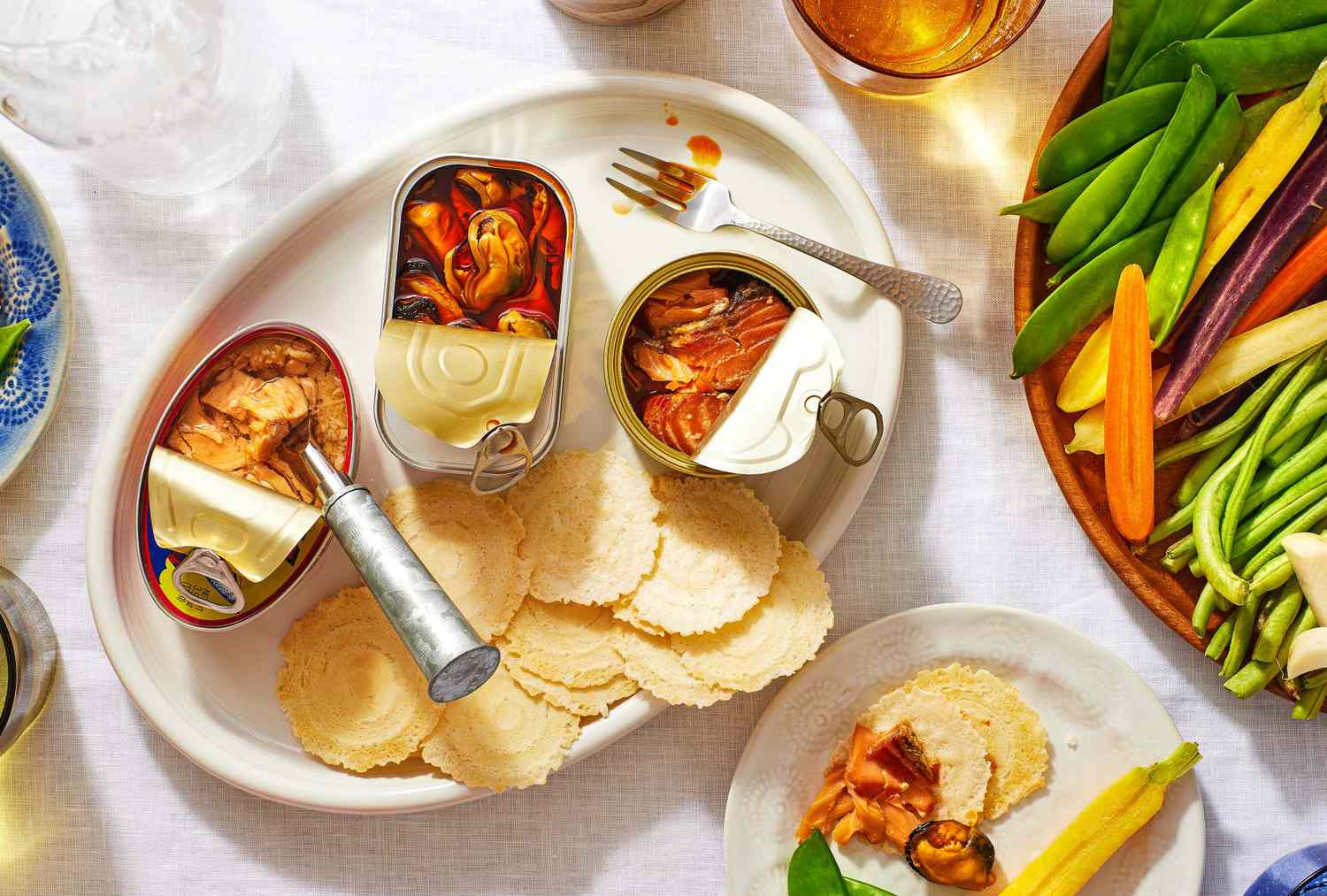Blog
5 Reasons to Eat Canned Fish, According to a Dietitian

- Canned fish is rich in omega-3s and may support heart, brain and joint health.
- It’s shelf-stable, budget-friendly and a smart swap for fresh or frozen seafood.
- Versatile and tasty, canned fish makes meals easy—straight from the tin or in recipes.
Canned fish is already a part of many global diets—you may know it as tinned fish, conservas in the Iberian Peninsula, kanzume in Japan (which can also include meat or veggies) or by a host of other names. While canned tuna may come to mind first, many other fish lend themselves well to canning. That’s because preserving fish in tins is not only convenient, it’s honestly a bit magical.
Canned fish, including salmon, sardines, mackerel and anchovies, just to name a few, are shelf-stable nutrition powerhouses packed with heart-healthy omega-3 fatty acids. Eating fish, especially those containing omega-3 fatty acids, is a hallmark recommendation of the Mediterranean diet.
But its nutritional benefits aren’t the only reason canned fish is popular. Canned fish is a budget-friendly and tasty alternative to fresh and frozen seafood.
Along with its nutrition benefits and price, canned fish is also a smart choice because of its versatility. Here, we’ll delve into the nutrition and culinary benefits that make canned fish deserving of more shelf space in your pantry.
Canned Fish & the Mediterranean Diet
The range of fish that comes in a can is as wide as the sea. Offerings include canned tuna, salmon, anchovies and sardines to trout, mackerel, cod, mussels, clams, oysters, octopus and squid. Chefs, wine bars, restaurants and specialty stores are serving canned fish like a charcuterie board complete with pickles, mustards and crackers. Top-quality canned fish may be served in place of higher saturated-fat foods like pâté and cured meats.
A swap from red meat to fish also coincides with the principles of the Mediterranean diet. While the Mediterranean diet initially focused on foods from countries surrounding the Mediterranean Sea, the healthy eating pattern that prioritizes fruits, vegetables, whole grains, legumes and healthy fats can easily be adjusted to your eating pattern and cultural roots. Instead of meat as the main protein source, fish and other lean proteins usually dominate.
Some people regularly include canned fish in their meals, but others may benefit from a thoughtful introduction. Here are the five most compelling reasons to eat more fish, both from a nutrition and culinary perspective.
1. Great Source of Omega-3s
Omega-3 fatty acids are essential fats—your body can’t produce them, so they must be consumed through food or supplements. A diet rich in omega-3s can benefit the entire body, as these healthy fats are naturally anti-inflammatory and may support heart health. In addition, their anti-inflammatory properties may help ease symptoms of osteoarthritis.
Fish varieties that are typically canned, like anchovies, salmon, sardines and tuna, are all great sources of omega-3 fatty acids. Health and nutrition experts recommend that adults eat 8 ounces of seafood every week.
2. Lasts Longer Than Fresh or Frozen
It is estimated that 15% of the global production of fish is thrown away, possibly because fresh fish has a short safety window. Along with being a less expensive option than fresh seafood, canned seafood is sealed in an airtight container and heated or preserved in salt, extending its shelf life to years instead of days. Even frozen fish, which is a less expensive option than fresh, doesn’t retain the same quality for as long as canned fish.
Due to its shelf-stable nature, canned fish is a reliable, nutrient-dense protein option for those who have limited access to utilities. It’s also a great option for travel, camping and picnic when refrigeration isn’t an option.
3. Can Be Sustainable
Thanks to many companies prioritizing working with local fisheries and canneries that adhere to sustainable fishing practices, canned fish can be a sustainable seafood option. When looking for sustainable canned fish, check the can to make sure the fisheries are using environmentally friendly equipment. Pole-and-line-caught, pole-caught, troll-caught, FAD-free, free school and school-caught are all terms you can search for when purchasing canned fish, especially tuna. If you don’t see any information about how the fish was caught, especially for tuna, there’s a good chance it was harvested using an unsustainable method.
4. Great Source of Vitamin D & Calcium
Vitamin D and calcium work in tandem to support healthy bones. While your body can make vitamin D with the help of sunlight, it’s one of the hardest nutrients to get in your diet. However, canned fish such as tuna, salmon, trout and sardines are great sources of calcium and vitamin D. In fact, 3 ounces of salmon contains approximately 570 IU of vitamin D, which is 71% of the recommended Daily Value.
5. Tasty & Versatile
Quite possibly the best reason to eat canned fish is because it’s flavorful and versatile, on its own or as an ingredient. Many types of canned fish, like octopus, squid and mussels, can be served directly from the cans with crackers but others are perfect for adding to recipes. Anchovies are a key ingredient in a classic classic Caesar salad, and canned salmon and tuna make incredible salmon burgers and tuna melts. Canned mussels, clams and sardines make show-stopping pastas as well as high-protein salad toppers, and canned trout can be transformed into a restaurant-worthy spread.
Our Expert Take
Canned fish is popular for many reasons. It’s a delicious, nutritious and budget-friendly ingredient for getting a healthy meal on the table in minutes, all from the convenience of your pantry. There are many options for canned fish, from the big brands that line your grocery store shelves to the specialty brands offering curated, artisanal tins. If you’re trying to eat more omega-3s, looking for a great dietary source of vitamin D or simply wanting sustainable, shelf-stable fish options, canned fish checks all the boxes.












